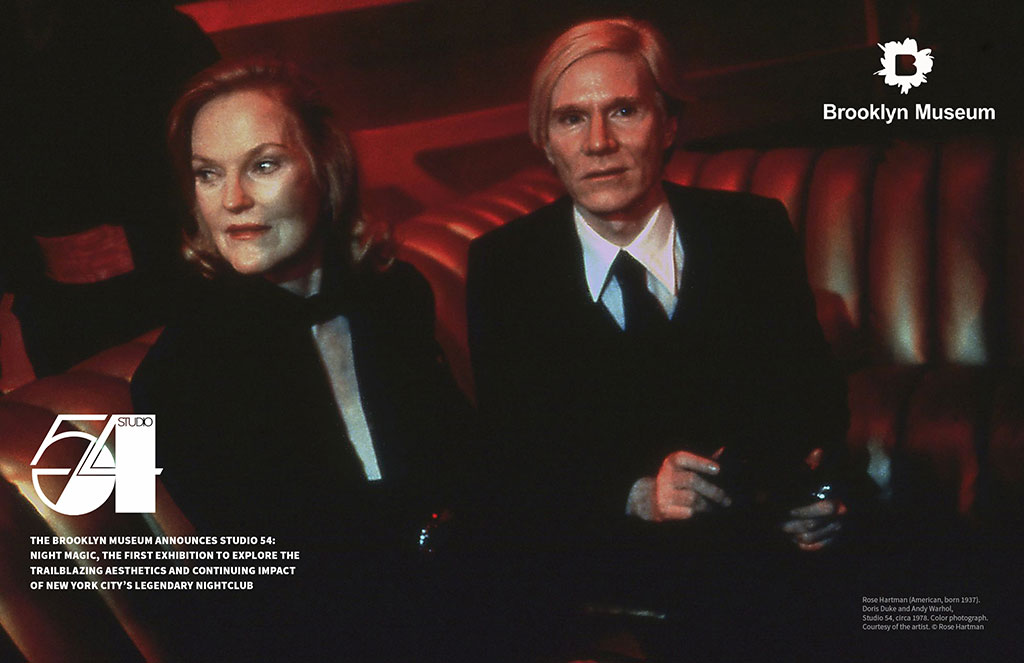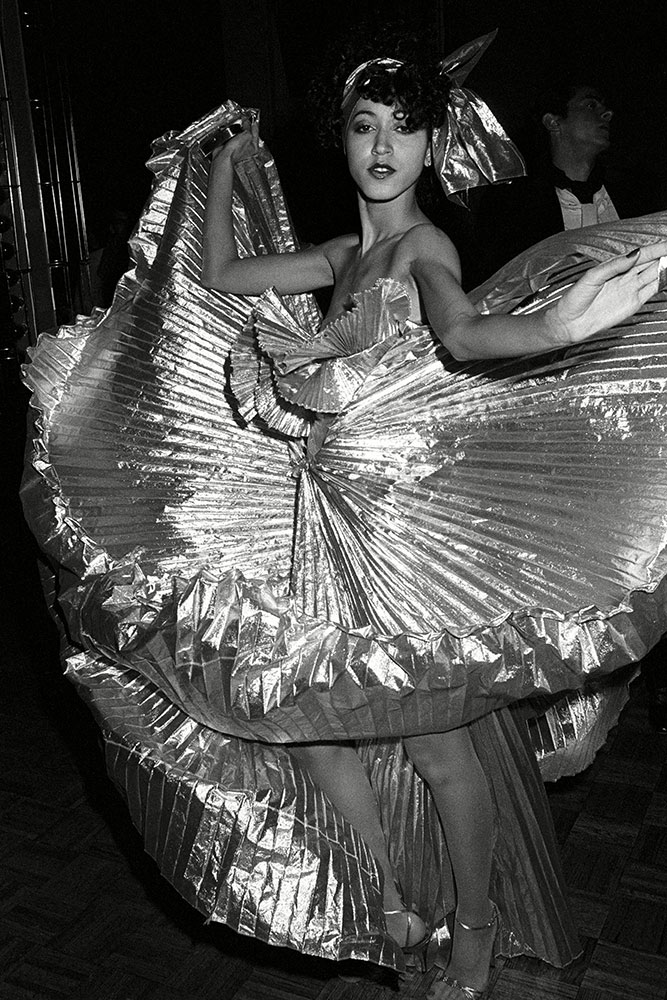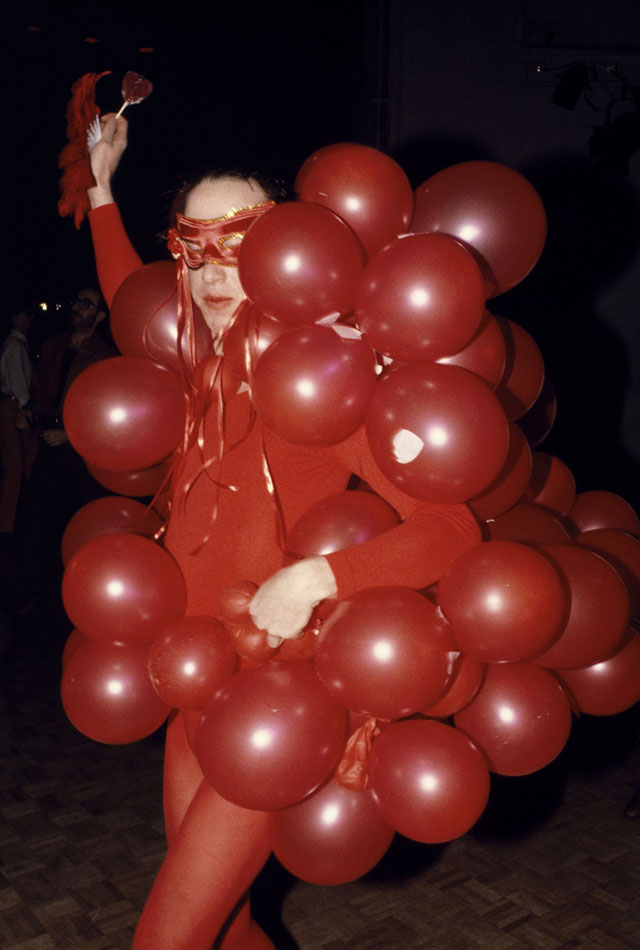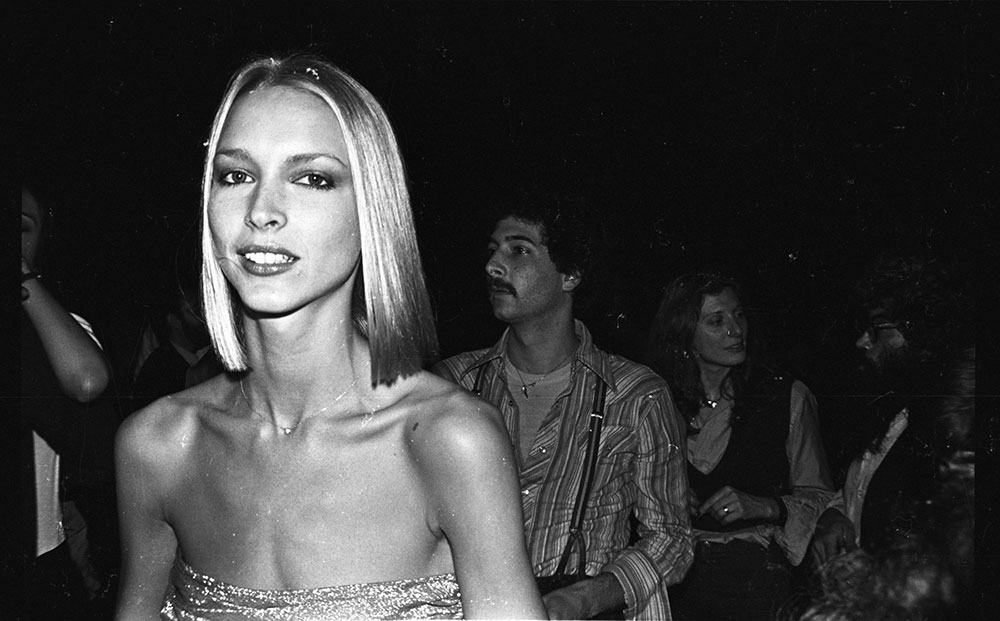The Brooklyn Museum Announces Studio 54:
Night Magic, the First Exhibition to Explore the Trailblazing Aesthetics and Continuing Impact of New York City’s Legendary Nightclub

Doris Duke and Andy Warhol,
Studio 54, circa 1978. Color photograph. Courtesy of the artist. © Rose Hartman
Highlighting the revolutionary creativity, expressive freedom, and sexual liberation celebrated at the world-renowned nightclub, the the exhibition will present nearly 650 objects ranging from fashion, photography, drawings, and film to stage sets and music.
Following the Vietnam War, and amid the nationwide Civil Rights Movement and fights for LGBTQ+ and women’s rights, a nearly bankrupted New York City hungered for social and creative transformation as well as a sense of joyous celebration after years of protest and upheaval. Low rents attracted a diverse group of artists, fashion designers, writers, and musicians to the city, fostering cultural change and the invention of new art forms, including musical genres such as punk, hip-hop, and disco. In a rare societal shift, people from different sexual, sociopolitical, and financial strata intermingled freely in the after-hours nightclubs of New York City. No place exemplified this more than Studio 54.

Courtesy of the artist. © Dustin Pittman
Though it was open for only three years—from April 26, 1977, to February 2, 1980—Studio 54 was arguably the most iconic nightclub to emerge in the twentieth century. Set in a former opera house in Midtown Manhattan, with the stage innovatively re-envisioned as a dance floor, Studio 54 became a space of sexual, gender, and creative liberation, where every patron could feel like a star. Studio 54: Night Magic is the first exhibition to trace the groundbreaking aesthetics and social politics of the historic nightclub, and its lasting influence on nightclub design, cinema, and fashion. The exhibition is curated and designed by Matthew Yokobosky, Senior Curator of Fashion and Material Culture, Brooklyn Museum.

during Halston’s disco bash at Studio 54, 1977. (Photo: Guy Marineau /
WWD / Shutterstock)
“Studio 54 has come to represent the visual height of disco-era America: glamorous people in glamorous fashions, surrounded by gleaming lights and glitter, dancing ‘The Hustle’ in an opera house,” says Yokobosky. “At a time of economic crisis, Studio 54 helped New York City to rebrand its image, and set the new gold standard for a dynamic night out. Today the nightclub continues to be a model for social revolution, gender fluidity, and sexual freedom.”
Anne Pasternak, the Brooklyn Museum’s Shelby White, and Leon Levy Director, adds, “At this current moment in history when struggles for liberation often collide with restrictive social norms, we are excited to present Studio 54: Night Magic. The exhibition encourages visitors to reflect on a significant era in our shared history and challenges us to consider the future and the many ways we can create a freer and more just world.”
Studio 54 was founded in 1977 by Brooklyn-born entrepreneurs Ian Schrager and Steve Rubell, who met while students at Syracuse University. The pair had dreams of opening a disco club in the center of New York City, where roller-skating rinks, Black and Latinx dance culture, and gay underground nightclubs were gaining popularity. From the moment Studio 54 opened, its cutting-edge décor and state-of-the-art sound system and lights set it apart from other clubs at the time, attracting artists, fashion designers, musicians, and celebrities whose visits were vividly chronicled by notable photographers.

Regulars included Andy Warhol, Bianca Jagger, Cher, Elizabeth Taylor, Farrah Fawcett, Liza Minnelli, Michael Jackson, Mick Jagger, Pat Cleveland, and Truman Capote. Singers Grace Jones, Diana Ross, and Donna Summer all performed at Studio 54. Fashion designers Kenny Bonavitacola, Stephen Burrows, Diane von Furstenberg, Halston, Norma Kamali, KENZO, Calvin Klein, Larry LeGaspi, Issey Miyake, Claude Montana, Robert Lee Morris, Zandra Rhodes, Yves Saint Laurent, Fernando Sanchez, and Giorgio di Sant’Angelo were frequently present, as were beauty experts Harry King and Sandy Linter.
In addition to presenting the photography and media that brought Studio 54 to global fame, the exhibition conveys the excitement of Manhattan’s storied disco club with nearly 650 objects ranging from fashion design, drawings, paintings, film, and music to décor and extensive archives.

The design of the exhibition itself is inspired by Studio 54’s original lighting and features innovative sets and audio elements that highlight the popular music and film of the era—including chart-topping songs like “Le Freak,” famously written after the band Chic was denied entry to the nightclub’s 1977 New Year’s Eve party, and “I Will Survive,” Gloria Gaynor’s B side that became an anthem after it was championed by Studio 54’s DJ Richie Kaczor.

Birthday, Studio 54, 1977. Black and white photograph. Courtesy of the artist.
© Rose Hartman
On view March 13–July 5, 2020
website: brooklynmuseum.org
facebook: brooklynmuseum
instagram: @brooklynmuseum

